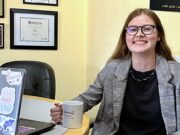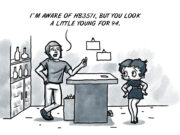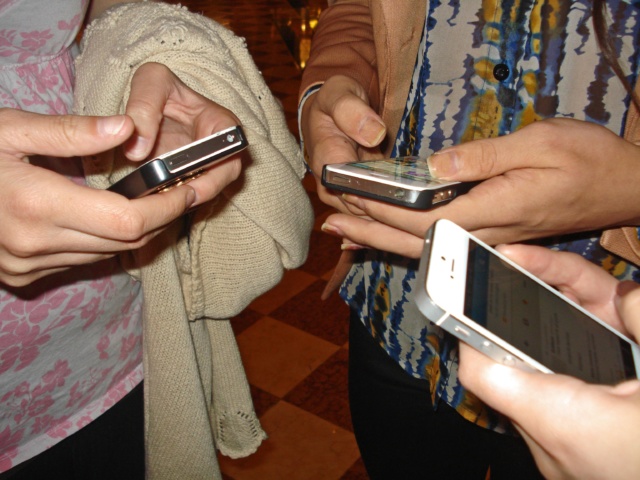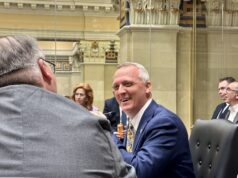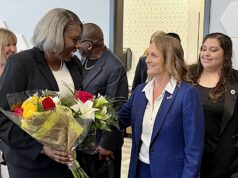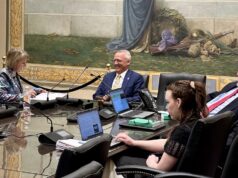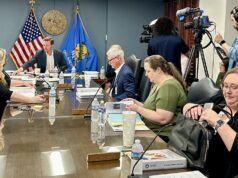
As we struggle to make sense of the 2016 election, Americans need the ability to “hold two opposing ideas in mind at the same time and still retain the ability to function,” as F. Scott Fitzgerald said.
On one hand, parents and grandparents quickly need to get on the stick and mentor young persons who are growing up in a post-truth culture. On the other hand, our society needs to step back and provide students with the opportunities to invent their generation’s means for learning how to learn.
Casual demonstrations of critical thinking
I was raised in the Baby Boom era, when parents were committed to preparing children to take advantage of opportunities that had been unavailable during the Great Depression. Parents and mentors were devoted to teaching us to be “inner-directed” persons, with the self-control and responsibility necessary for a prosperous and stable life.
Oklahomans were especially known for saying, “Pay close attention; I’m only going to show you once.” It was a signal to focus — something exciting and important was about to be revealed.
(The phrase was so ubiquitous that “Pay close attention; I’m only going to show you once” became the punchline of an archetypical oilfield joke, which means, of course, that it is too dirty to repeat here.)
Coaches and fathers had another phrase that embodied this principle of learning how to learn: If a kid made an error, or saw something new on the ball field, the adults would proclaim, “Go to school on that!”
And by role-modeling how it was that a curious mind interacted with the world, the adult figure was also demonstrating how to think critically.
Vulnerability to post-fact spin increases
More recently, grown ups (or “growns” as I used to call them) may have been slow in recognizing the ways that top-down, test-driven, competition-driven school reform was resulting in-one-ear-out-the-other, “drill and kill” education. Soulless teach-to-the-test instruction often rendered classroom instruction meaningless.
Too often, we were supposed to deemphasize project-based and hands-on learning in an era where teachers and students were supposed to comply with mandates for bubble-in accountability. The result could be more graduates who are uniquely unpracticed in analysis and synthesis and thus extra vulnerable to post-fact spin.
‘Drift off into cyberspace together’
Adults cannot merely tell students to pay attention. We cannot trick kids into concentrating. Instead, we must find other ways of sparking students’ interest to generate the intentionality necessary for learning for comprehension.
Neither can the dictum of “Pay close attention; I’m only going to show you once” be recalled as an artifact of a teacher-centered world that is obsolete in a world made “flat” by technology. It must be heard within the spiritual context of Death of a Salesman: “Attention must be paid.”
We all have a moral core, and we all want attention to be paid to our humanity. The hearts of teens today are as hungry as those of preceding generations. I doubt there is another power on earth, other than an appeal to students’ emotional and moral consciousness, that could pry their fingers off of their texting contraptions. The screens are a conduit for that sought-after attention going out and coming in.
In hindsight, parents and educators were definitely too slow to take charge and help teach kids how to control their cell phones and not be controlled by them. Adults were largely missing the action during the rise of digital technologies and social media. We completely shirked our duty and failed to mentor kids, ducking the need to teach students to cross-examine the stuff that appears on their handheld screens.
On the other hand, we must also embrace the different approach that was illustrated by Sugata Mitra, who placed computers in public kiosks and left New Dehli kids alone to explore the digital world. Mitra reminds us that education is not about “making” learning happen but by “letting it happen.” He is not being naïve in saying that educators must do what grandmas have long done, saying, “Wow!” and saluting the learning of young people. Our goal must be schools where adults and 13-year-olds come together, where we “all drift off into cyberspace together.”
‘Magic happens sometimes’
Perhaps the most practical, most balanced way of grabbing kids’ attention, and empowering them to think deeply and creatively, is exemplified by the innovation known as “teen science cafes.” Education Week’s Marva Hinton reports:
Teen science cafes bring young people together with professional scientists outside of school to discuss newsworthy topics in the field. In many cases, the participants get a chance to do some sort of hands-on activity. The meetings are designed to be casual and fun. The teenagers also take charge of the events with the help of adult mentors.
Hinton quotes David Evans, the executive director of the National Science Teachers Association, who says:
It’s empowering for kids to be able to ask questions and meet scientists. … When you get that kind of engagement going, magic happens sometimes. It’s a lot closer to the real thing than what they might see in a classroom or out of a book.
We may even be approaching the point where data-driven, corporate school reformers will agree to a balance between timeless values and innovative educational adventures, between adults playing traditional mentoring roles and giving kids the space required for self-discovery.
Teaching and learning as ‘natural acts’
Conservative reformer Rick Hess has always been an iconoclast, but educators on both sides of the reform wars should embrace his new affirmation:
At root, teaching and learning are intuitive acts. Kids are naturally curious; they’re natural learners. The human mind is hard-wired to ask questions and seek out knowledge. And adults are predisposed to share knowledge, interests, and skills. When one feels confounded or overwhelmed by the challenges of educational improvement, it’s worth keeping in mind that teaching and learning aren’t the product of some mysterious alchemy—they’re deeply natural acts.
I agree.
Let’s answer to the stakeholders who truly matter: the students. Listen to teens and they will teach educators how to teach them. Listen carefully and students will explain how they crave relationships with adults.
Still, parents and teachers must be forewarned — today’s kids may not be as explicit as our parents were. Perhaps we could coach our kids on the best ways to school adults. In an authoritative but not authoritarian voice, students should tell the grown ups, “Pay close attention; I’m only going to show you once.”



